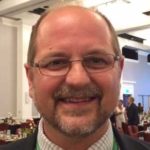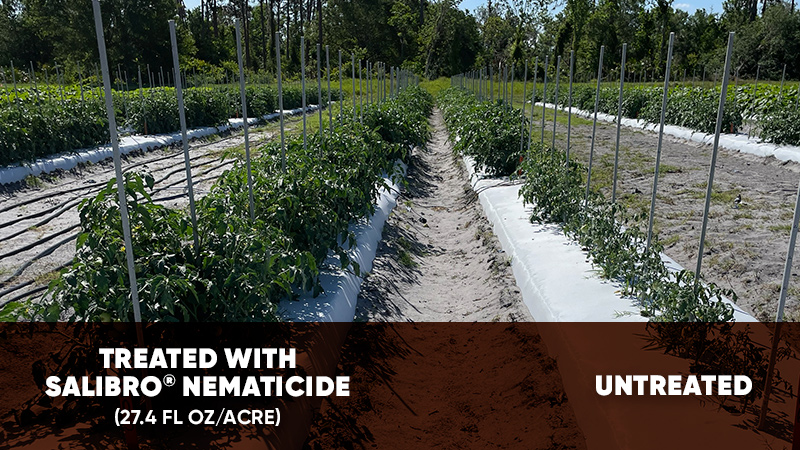New Lessons from Old Teaching Orchard in Florida

Newly planted citrus seedlings on the University of Florida Gainesville campus will focus on HLB-tolerance and other attributes. Photo courtesy of UF/IFAS
The University of Florida’s Horticultural Science Department in Gainesville has long recognized the value in maintaining an on-campus tree fruit teaching orchard. It was first planted in the 1970s, focusing primarily on avocado and low-chill peaches. The teaching orchard is located across the street from Fifield Hall and a short distance from the famed Lake Alice. Its location is convenient for undergraduate and graduate students, and its support of agricultural education and research remain a tangible and visible testament to the university’s commitment to its land grant mission.
Citrus Breeding Crossroads
The first citrus hybrids were generated by Dr. Wayne Sherman at the teaching orchard in 1989 with the assistance of Dr. Herb Barrett from USDA-ARS (then located in Orlando). Dr. Barrett supplied much of the initial citrus germplasm. Fresh off the devastating freezes of the 1980s, the early focus was on cold tolerance. The first crosses were made in 1991 and the first selections were made in 1995-1996. The efforts first supported backyard citrus, with a commercial emphasis coming later. The main source of cold tolerance in the program was Poncirus trifoliata. It was clear from the beginning that due to the inedible nature of Poncirus, it would take multiple generations of crosses to maintain the beneficial traits, while adding commercially acceptable qualities (size, color, flavor, juice content, etc.). Dr. José Chaparro continues this work today as the only active Gainesville-based Horticultural Science faculty member working on citrus (Gloria Moore, Professor Emeritus, continues to contribute to this effort, as do four professors in other departments contributing specific expertise on a project basis).
Room to Grow
Space is a luxury on campus, necessitating very efficient use of property and resources in support of the teaching and research missions. Recent developments on campus have led to a severe reduction in the available planting space. UF/IFAS leadership, in recognition of the academic and research importance of the orchard, added a new 5.7-acre block to the property’s east side. The orchard is now roughly 18 acres instead of the previous 25, but it is alive and well. The new plantings will be available for the start of fall 2019 semester.
The changes at the teaching orchard came at a price. Trees had to be buck-horned back, cataloged, and moved. The new land had to be prepared, new wells had to be drilled, new irrigation had to be established, and structures had to be built. Some of the trees that were moved survived, but some original germplasm was lost. The cycle of making crosses; planting seedlings; rogueing for tree health/tolerance and vigor; fruiting, selection; replication; and evaluation was severely interrupted. All told, it is estimated the move of trees and greenhouses will cost the program three valuable years. This was three years of Dr. Chaparro’s productivity and three years that a HLB-impacted citrus industry could ill afford. It was an unfortunate, but all is not lost.
The past few years have been very disruptive on the small Gainesville breeding program, but hard work, administrative support, and perseverance has produced a silver lining. Good things are happening. As long as the industry stays engaged and ensures the survival of the on-campus program, we can look for more positive news.
Today, the new block in the teaching orchard is 80% replanted and is again supporting the academic and research components of its mission. Here are some excerpts from a recent interview I conducted with Dr. Chaparro:
What kinds of citrus-related research are the current focuses of your program?
A: Work on cold-tolerance is now on the backburner. HLB-tolerant citrus is now the main focus. Selections are made on the basis of HLB tolerance, productivity, and fruit quality. Since Poncirus was used in some of the original germplasm, this also has contributed to increased HLB tolerance of some material.
Do you see a future for grapefruit in Florida? Grapefruit has long been Florida’s premier fresh fruit, but it has suffered greatly with HLB. What is next?
A: I see great long-term potential for grapefruit in Florida. Short-term solutions will be the continued control of Asian citrus psyllid and the use of existing rootstocks (like Sour Orange) and enhanced nutrition. Breeding for tolerance in grapefruit is a very attractive proposition. We know that grapefruit originated as a hybrid between Sweet Orange and Pummelo. There is a great deal of genetic diversity in Pummelo. If we can generate sufficient populations, we can select for grapefruit-like characteristics and increased tolerance. It’s a numbers game. We need greater breadth of genetics than what is typical grapefruit represents.
What do you see in your crystal ball for processing oranges in Florida?
A: I am excited to be producing larger populations of orange-like (tangor) selections. Again, we know there is a range of tolerance in the mandarin lines, and since sweet orange is derived partially from mandarin, we can produce fruit with very orange-like characteristics and select for tolerance. We are already making selections for tolerance — some of which will be breeding parents and others are going into trials and moved to processors for testing.
In the short-term, I see the use of more tolerant rootstocks that mitigate the effects of HLB.
Longer-term, the use of orange-like tangors in processing, resistance from novel sources such as desert lime and citrus relatives, and new juice categories that will utilize these exciting options. Future orange cultivars will be far more diverse.
What are you doing in the specialty fruit arena?
A: Easy peel, seedless mandarins has long been a focus of this program, and this work will continue with use of the seedless ‘Kishu.’
What other work are you doing that is a little on the fringe?
A: I am also working on precocity (bloom quickly from seed) as well as enhanced flesh color for the fresh market. A small part of my work is with acid fruit types.
You are working with graduate students who are interested in being plant breeders. Where are they going after graduation?
A: Most are going into the industry rather than academia. I have former students working with blueberries, peaches, strawberries, and papaya.
Finally, among your current projects, what really excites you?
A: Some of my material has been included in the Ft.Pierce Millennium Block. I am very eager to see how it performs under severe disease pressure. I will learn a great deal about canker and HLB resistance from that trial.
I am also very encouraged with our work to move resistance from Australian desert lime and other wild species into mainline citrus. This work is moving faster than we had anticipated and is showing some hopeful and encouraging results.










